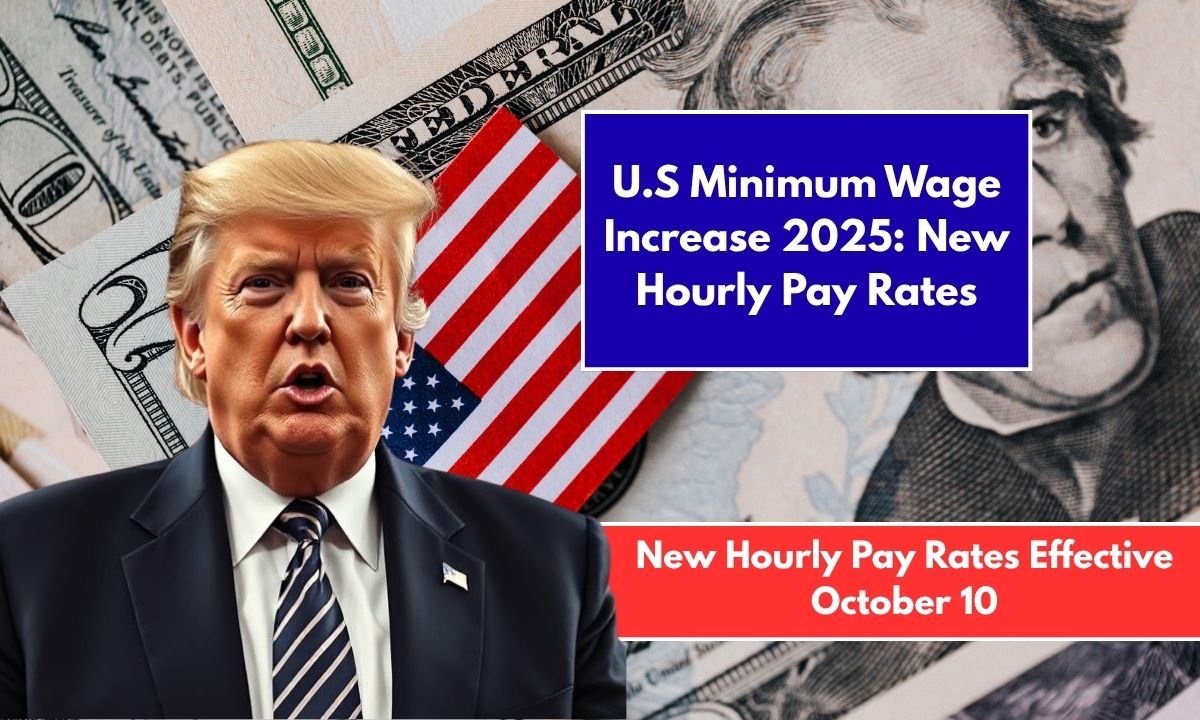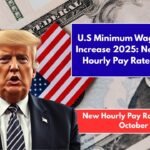The United States is entering a new phase in 2025 as the federal minimum wage gets an update effective October 9. This increase is one of the most talked-about economic topics this year. For millions of workers, it means a little extra cash in their pockets. For employers, it brings both opportunities and challenges. Let’s break down what this new wage increase means and how it affects everyone—from big corporations to small-town workers.
What Is the Minimum Wage and Why It Matters
The minimum wage is the lowest hourly pay employers can legally offer workers. It’s designed to protect employees from unfair pay and ensure they can afford basic living expenses. Think of it as a financial safety net that helps maintain economic balance and reduce income inequality.
When the minimum wage rises, it doesn’t just impact workers—it influences the entire economy, from local shops to national businesses.
The 2025 Wage Adjustment Explained
Federal Minimum Wage Changes
Starting October 9, 2025, the new federal minimum wage will rise to $10.50 per hour, marking the first major adjustment in years. The change aims to reflect modern living costs and ensure workers earn enough to sustain themselves without depending on multiple jobs.
State-Level Adjustments
Several states are also increasing their minimum wage rates beyond the federal standard. For example, states like California, Washington, and Massachusetts already pay more than the national rate, and many are planning additional hikes this year to keep up with inflation.
Factors Behind the Wage Increase
Rising Cost of Living
Over the years, the cost of everyday needs—like rent, groceries, and healthcare—has climbed significantly. Workers earning old wage rates have found it difficult to make ends meet. The 2025 wage increase aims to close that gap.
Inflation and Economic Growth
As inflation grows, the value of money decreases. This means that even if workers earn the same amount, they can buy less with it. Adjusting wages helps stabilize purchasing power and supports economic circulation.
How the New Wage Rates Affect Workers
Benefits for Low-Income Employees
For millions of hourly workers, this increase brings relief. They can now cover more of their daily expenses without constant financial stress. The change also helps reduce dependency on government assistance programs, giving workers more financial independence.
Impact on Part-Time and Tipped Workers
Part-time and tipped employees—like waiters and delivery staff—often rely on tips to make up their earnings. Under the new rules, even these workers will see improved guaranteed base pay, ensuring fairer compensation regardless of tip amounts.
Effects on Small and Medium Businesses
Challenges Faced by Employers
For small business owners, rising wages can be a double-edged sword. While it helps attract loyal employees, it also increases payroll costs. Some businesses may need to raise prices slightly or adjust their workforce to manage the additional expenses.
Adjusting to Payroll Increases
Many businesses are already planning for the change by updating budgets, improving productivity, and using automation tools to maintain efficiency while keeping labor costs manageable.
Regional Wage Differences Across the U.S
States with the Highest Minimum Wages
Some states have been leading the way in wage reform. Washington, California, and New York are known for having the highest hourly pay rates, often above $15 per hour. These states have linked their wages to inflation to ensure fair annual adjustments.
States Still Following Federal Guidelines
Other states, especially in the South, continue to rely on the federal minimum wage. Workers in these regions may not see as much benefit until state legislatures pass similar increases.
How Employers Are Preparing for the Change
Employers are updating payroll systems, reviewing job roles, and investing in staff training to boost productivity. Many are also using this change as a chance to strengthen company culture and improve retention rates.
What This Means for Consumers
As wages rise, consumers might notice small price increases on products or services. However, higher wages also mean more people have disposable income, which can boost spending and support local businesses—a win for the economy overall.
Long-Term Economic Impact
Experts predict that this wage increase will strengthen the labor market and reduce poverty rates. Over time, it can lead to more stable communities, improved health outcomes, and stronger economic growth.
Tips for Workers to Maximize Their Earnings
Workers can make the most of this wage boost by creating budgets, saving a portion of their income, and exploring skill development opportunities. Continuous learning and upgrading skills can open doors to higher-paying positions in the future.
Conclusion
The U.S minimum wage increase effective October 9, 2025, marks a positive step toward fair pay and economic balance. It’s not just about money—it’s about dignity, equality, and progress. While challenges exist for employers, the overall impact on workers and communities will likely be uplifting. A fair wage builds stronger families, happier employees, and a healthier economy.
FAQs
What is the new federal minimum wage in 2025?
The new federal minimum wage is $10.50 per hour, effective October 9, 2025.
Will all states follow the new rate?
Not necessarily. Some states have their own minimum wage laws, often higher than the federal rate.
How does this change affect small businesses?
Small businesses may face higher labor costs but can benefit from improved employee satisfaction and retention.















